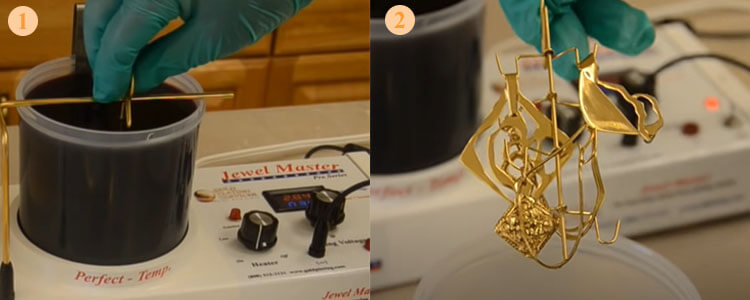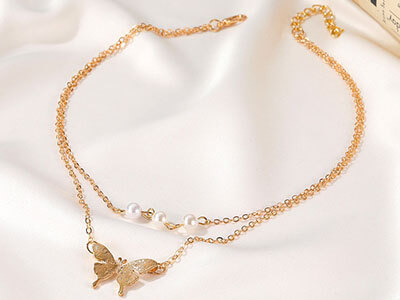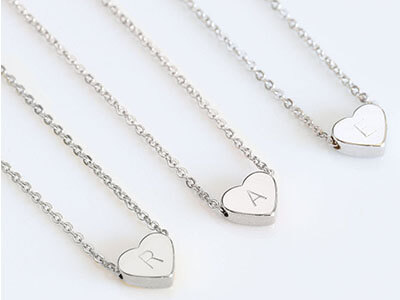Base metal jewelry with gold plating is extremely popular now. Do you know how the gold plating is done? There are different coating methods for making the gold plating, including PVD, electroplate, CVD, etc.
Among so many coating methods, PVD is very famous for making highly durable and authentic-looking artificial jewelry.
In this article, I’ll guide you to learn some information about PVD on jewelry. No matter you want to improve your personal jewelry or have a jewelry business, don’t miss it.
1. What Is PVD Coating On Jewelry?
PVD stands for physical vapor deposition. PVD coating refers to a dry plating on the surface of the jewelry, which can make jewelry show different colors and features.
In short, the main PVD working process is the deposition of a thin layer of elements on the chosen product. The most important thing to note here is that this process takes place in a vacuum chamber.
Once the PVD coating is applied to any material, it is nearly impossible to remove this type of coating. It makes the object highly resistant to wear-and-tear situations.
Additionally, there are two kinds of PVD methods usually used on jewelry:
- Sputtering PVD method
- Cathodic-Arc PVD method
Among the 2 methods, Sputtering deposition is mostly used because it occurs at temperatures that are suitable for almost all varieties of materials.
In comparison, the Cathodic-Arc method is very less used because, in it, a coating material temperature may climb up to 15000° Celsius ( 15273° Kelvin ), which is not bearable for most materials.
2. What's the Purpose of PVD Coating on Jewelry?
There are many methods for coating artificial jewelry, such as electroplating, PVD coating, DLC coating, CVD coating, etc.
Among these, PVD and Electroplating are mostly used on jewelry. But PVD-coated jewelry is more durable and long-lasting than jewelry coated by electroplating.
PVD coating on jewelry change the features of the products from 2 aspects:
- Decorative aspect
- Functional aspect
In terms of decorative purposes, PVD coating can make the jewelry show different colors, even the rainbow color. Now, the gold plating on jewelry is popular in the European and American markets.

Besides, PVD coating creates a thick layer over the surface of the jewelry, hence making it more resistant to corrosion. Other benefits include increased durability, longer lifespan, and corrosion-resistant properties.
Mostly PVD-coated jewelry with everyday wear can last 3 years and more, while electroplated jewelry can last only for 1 year with daily use.
3. What's the Process of PVD Coating on Jewelry?

Pic source: Ysuymachine, Actechnol
In the basic PVD process, the coating substance is evaporated, and the vapors are bombarded on the surface of the object. Most of the vapors, when hit the object, get attached to the surface at molecular or atomic levels.
You can say this process is like spraying the PVD coating material layer by layer onto the surface of an object but at microscopic levels.
In the case of the more detailed procedure include:
- Cleaning the base products, usually the metal
- Placing them in the vacuum chamber of a PVD machine
- Coating materials converting into vapor and spraying on the products
Usually, the PVD coating thickness is between 0.25 microns ~ 5 microns, which is very little. In contrast, human hair has a diameter of 70 microns, so just guess how slim the PVD coating will be.
Besides, the various characteristics of the PVD coating, such as friction, color, hardness, etc., can be controlled by adjusting the following factors:
- Temperature
- Coating thickness
- Coating substance nature
- Vacuum chamber pressure
- Reagent gases volume and type
4. PVD Coating vs Electroplating
PVD and electroplating are two famous processes used for making gold-coated jewelry.
We have explain how PVD method works in detail above. In the following part, I’ll introduce what is electroplating to you.
Electroplating
To explain the process of electroplating, I’ll give gold electroplating on jewelry as an example. In the electroplating process, gold-plated jewelry is made by the following procedure:
- First, jewelry is cleaned in an electrolytic solution.
- Second, jewelry is deposited in a gold solution, and a negative current is applied to the jewelry while the positive current is applied to an anode.
- Finally, the dissolved gold in the solution gets deposited on the jewelry.
Electroplating is a very quick and easy process. It does not need any high-cost complex pieces of equipment. But the Gold-Plated Jewelry has much less durability than Gold PVD Coated jewelry.

Pic source: Gold Plating Services
Gold PVD-coated vs gold electroplated jewelry
The 2 methods have very different working principles, prcedures, uses, etc. You can check the table below to get the information about the differences between the 2 coatings quickly.
PVD Electroplating
Anti-Scratch ✓✓✓ ✓
Fading by Sunlight x ✓
Wear durability ✓✓✓ ✓
Hardness Very hard Less hard
Coating Costs High Low
Life-span Longer Long
Pollution Pollution-free Yes
Coating Equipment Costly, complex Low-cost, simple
5. Common Types of PVD-Plated Jewelry
You may select any of your preferred colors of PVD coating among gold, silver, brass, chrome, black, and blue, etc. I list some common types of PVD plated jewelry in the market for your reference:
K Gold PVD Plated Jewelry

Gold-plated jewelry is trending now. They look elegant, vintage but affordable. The plating of gold PVD plated jewelry is usually k gold. Moreover, the most trending coatings are 14k and 18 k gold, while the most popular base materials of gold-plated jewelry are 304 and 316 L stainless steel.
The prices of gold plated jewelry vary from the base metals and the coating materials. You can choose according to your desired effect and budget.
Silver PVD Plated Jewelry

This type of PVD coating consists of silver material that enhances the looks of the material in terms of silver color. Silver decorative PVD coating is also durable and more resistant to corrosion due to the thicker and harder silver layer on the material. PVD coating is known to be more suitable with titanium and silver.
Black PVD Plated Jewelry

Black PVD coating on jewelry is another common PVD coating. The materials of black PVD coating can be titanium nitrides or carbide titanium nitrides. It creates a protective barrier on the surface so that it is more resistant to corrosion. Besides, it also gives an attractive blackish look to the jewelry with durability.
6. Is Gold PVD Coating On Jewelry Real Gold?
Gold PVD coating on jewelry may or may not be real gold depending on different factors such as the demand of customers. You can have a real gold PVD coating on your jewelry, or simply a normal yellow color that will look like real gold.
In both cases, it will enhance the look of your material as well as the durability level. The materials of gold PVD coating can be brass or copper. Plus, in the case of a real gold PVD coating, 24k, 18k, 14kt, or 9k gold is used on the surface of your material.
Final Words
If you still have some confusion about PVD coating, leave a message below and I’ll be pleased to help you. Don’t forget to share this blog on the social networking sites like Facebook, Twitter, Pinterest, etc.
We’re Jingsourcing, a leading sourcing company in China. If you want to wholesale or customize fashion jewelry, please feel free to CONTACT US.

I found the comparison of PVD and electroplating really helpful in understanding the differences between the two. As a consumer, it’s nice to know that PVD is a more durable and long-lasting option for jewelry, especially since it’s becoming increasingly popular in the industry. Thank you for sharing this informative post!
Interesting read! I had no idea PVD and electroplating were used for jewelry. It’s great to understand the differences between the two processes and their purposes. Thanks for sharing this informative post!
Thank you for providing a detailed comparison between PVD and electroplating for jewelry purposes! I found it really helpful to understand the differences between the two techniques and their respective advantages. As a jewelry enthusiast, it’s important for me to know the quality and durability of the pieces I buy, and this information has helped me make better purchasing decisions. Great post!.
Way cool, some valid points! I appreciate you making this article available, the rest of the site is also high quality. Have a fun.